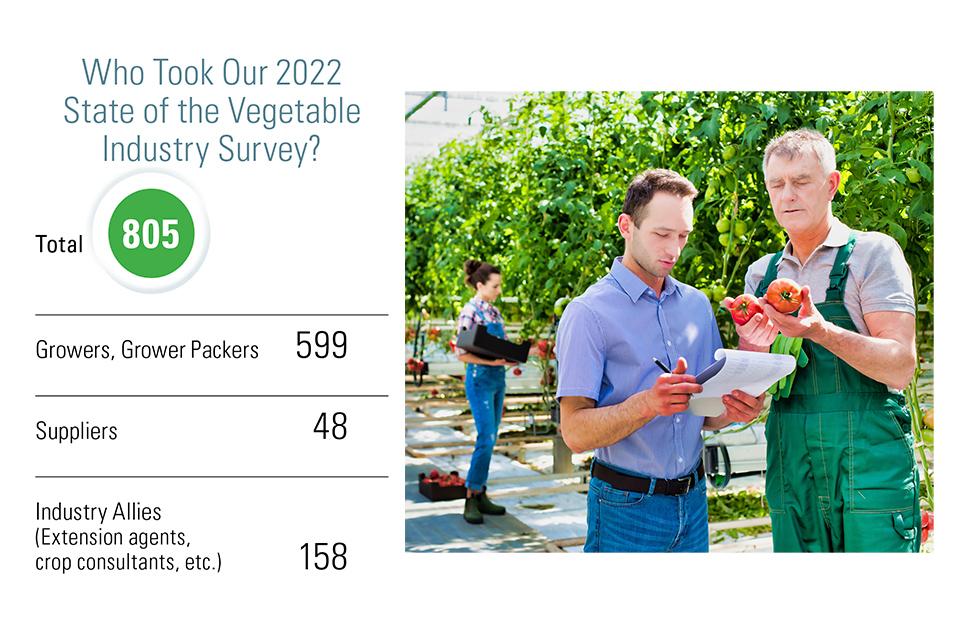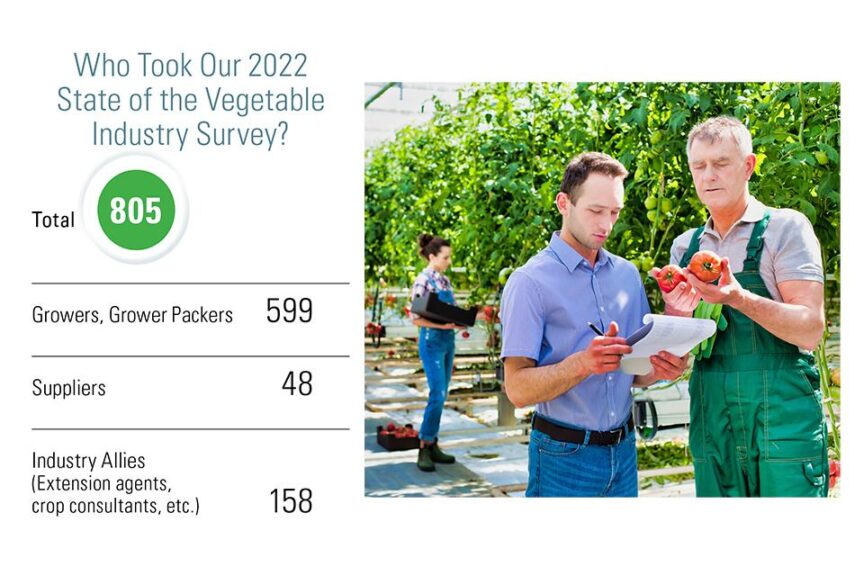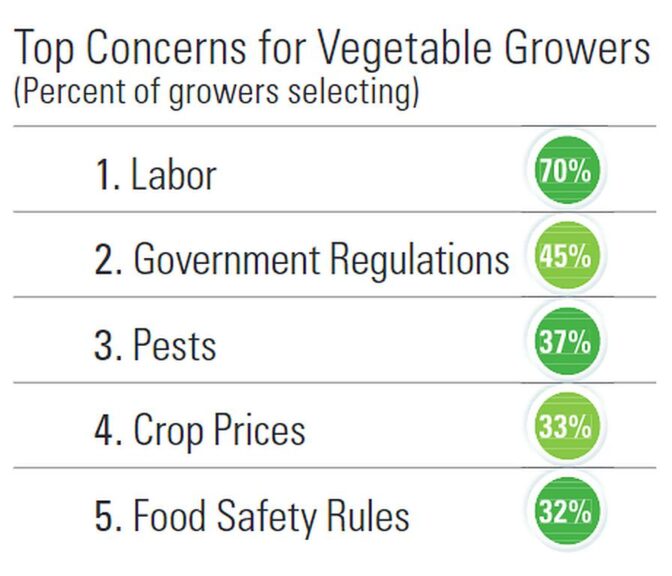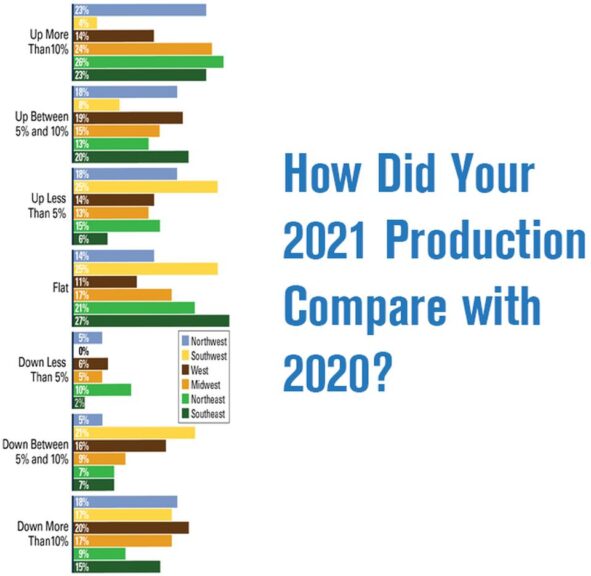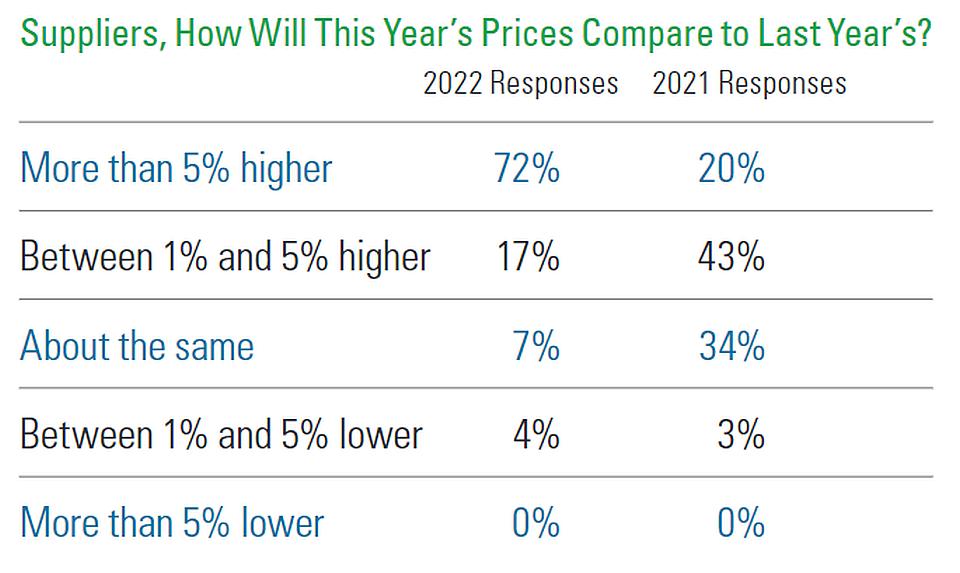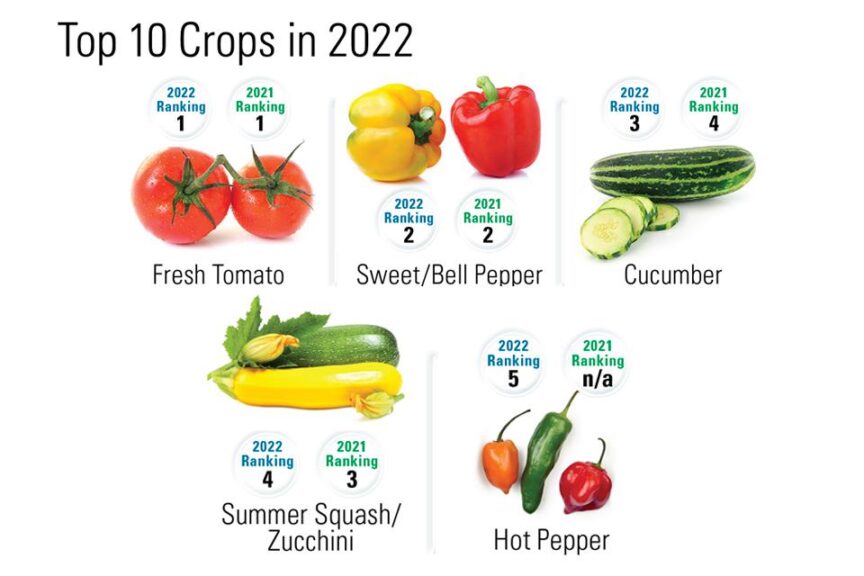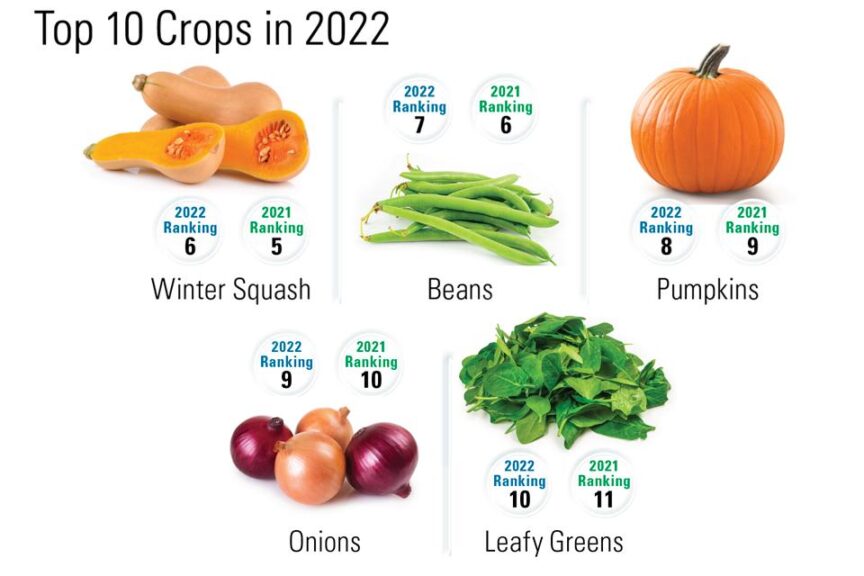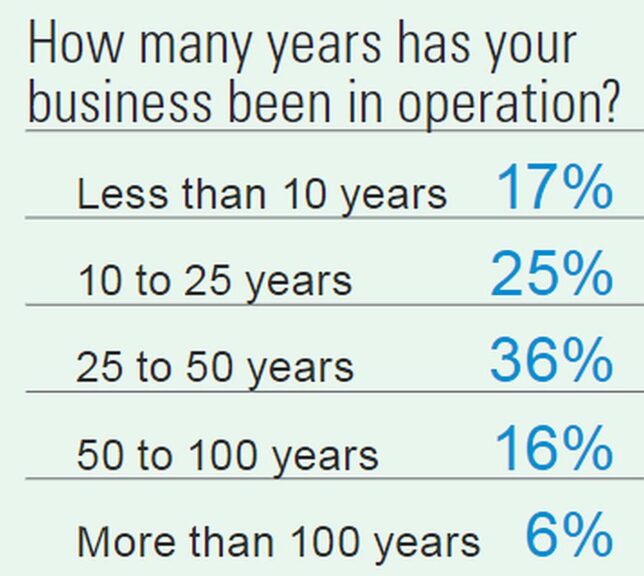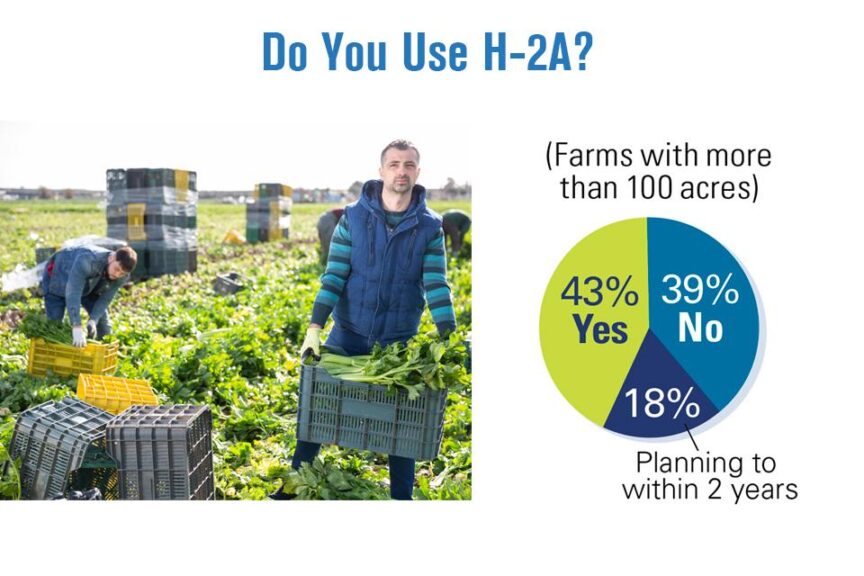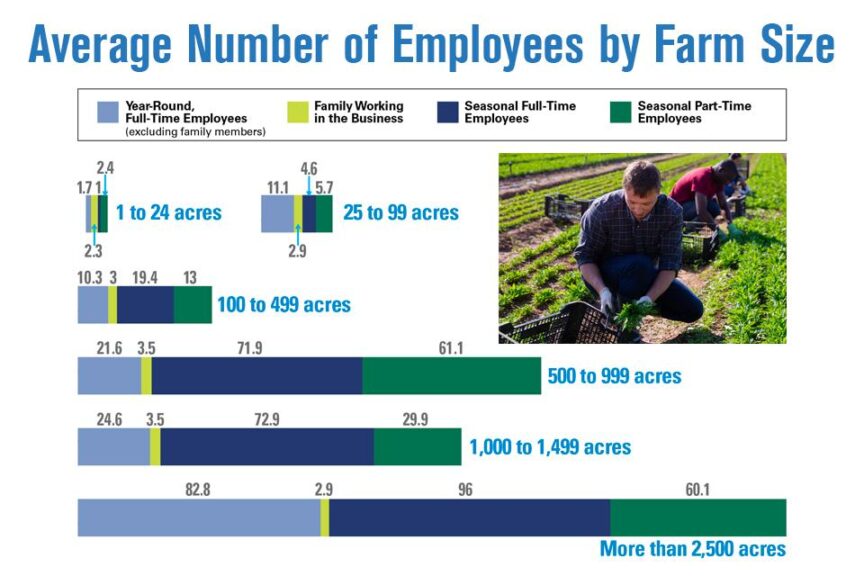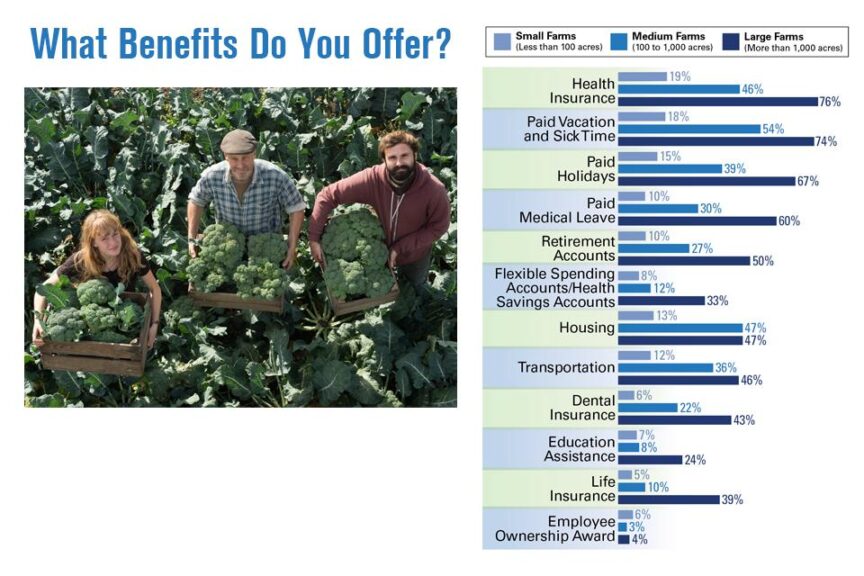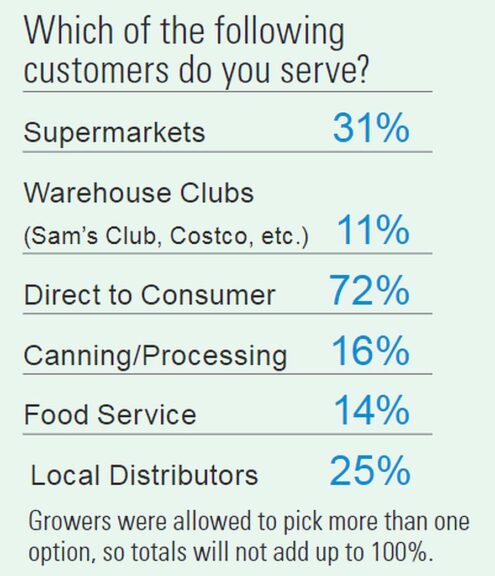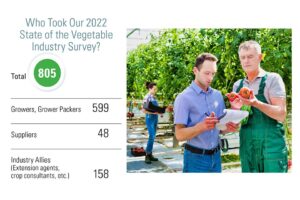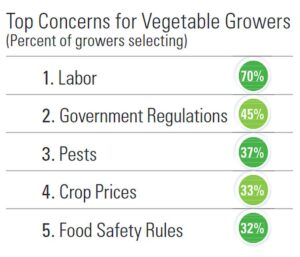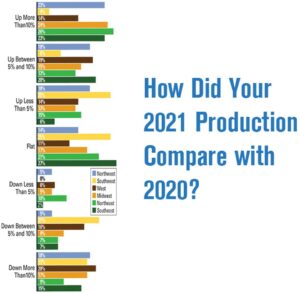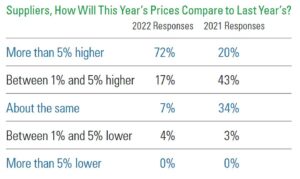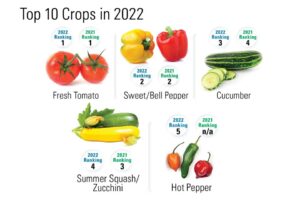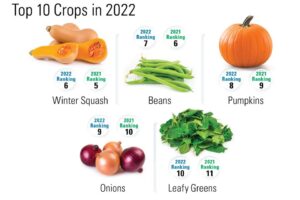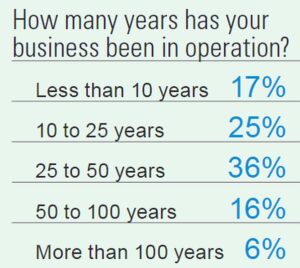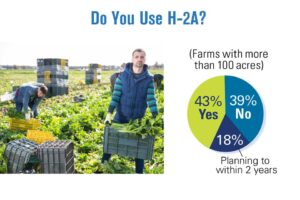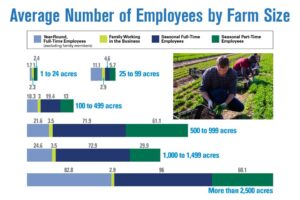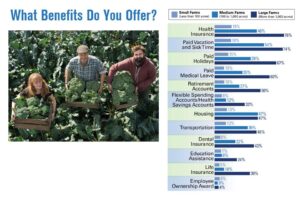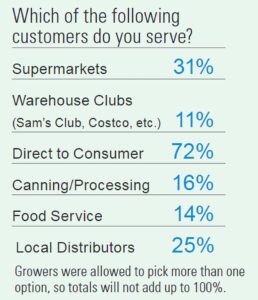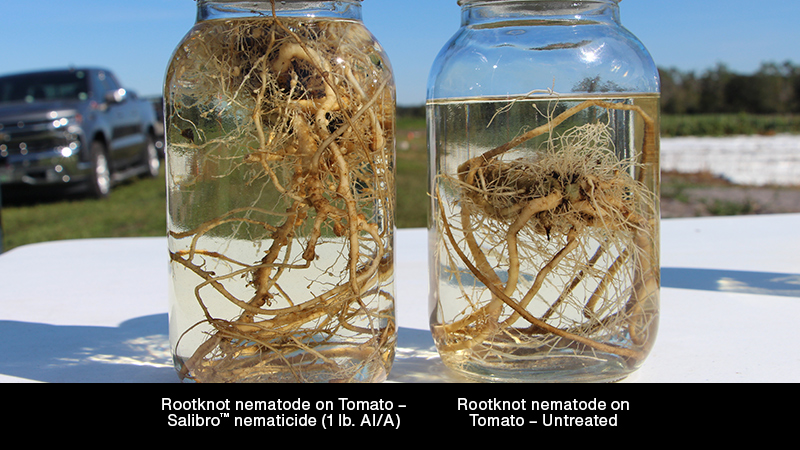Current State of Vegetable Growing Leaves Industry Officials with Plenty to Talk About
What do researchers, consultants, and other allies to the industry find most exciting about vegetable growing these days? According to American Vegetable Grower® magazine’s 2022 State of the Industry survey, nothing beats the topic of varieties.
What Excites Vegetable Industry Insiders?
A large number of survey respondents express optimism over new varieties and management tools, improved varietals and hybrids, and the recovery of heirloom varieties.
Good seed breeding overall garnered plaudits.
“What excites me the most for the vegetable industry is new varieties of crops that have better yields, are weather tolerable, and are more resistant to pests and diseases,” an Extension specialist from California says. “These are truly the way that crops are able to be grown sustainably with less inputs.”
Cited nearly as frequently is the prospect of using less pesticide while growing organically. Consumer interest in organic vegetables is at an all-time high, with good profit, an Extension specialist from Texas notes.
“I am especially excited by the 200% increase in production in the Salinas valley by using cover crops in conjunction with compost for organic growing,” a crop consultant in California says.
New technology, such as artificial intelligence (AI), mechanical harvesting, and drones, also rates well among researchers. Included are drone applications of beneficial insects and the increased use of biologicals to control pests.
As a Wisconsin-based crop advisor puts it, there is “endless room for improvement” in the vegetable industry. Other issues that excite survey respondents include:
- Demand for fresh local produce.
- Drip irrigation, increased fertility, and yield management.
- Hydroponic farming.
- Increase in diversity of crops on a local level.
- Introduction of new genetics to improve crops.
- New farmers.
- That the U.S. still raises the cleanest highest quality produce in the world.
- The breeding emphasis on improving flavor.
- The development of micro greens and all-year growing.
- There are actually people wanting to get into vegetable production but on a small scale. These are retail growers not wholesale.
The Challenges They ID’d
Researchers most often lament the cost and/or availability of four essential elements: labor, crop inputs, fuel, and water. Specifically, they say, knowledgeable and skilled labor is lacking. Labor laws are detrimental. Absent is a reasonable increase in price from buyers to match input costs.
“Shortages in water, transportation cost, low crop prices back to the grower, and at this time considerably higher fuel and fertilizer prices,” a crop consultant in Colorado rattles off. “Any more the American people are at three generations removed from some agricultural background. People need to be more educated where food comes from. Let’s face it: We all survive from out of the back end of a semi-truck trailer.”
Water issues are particularly complex, according to researchers. Climate change, some say, is at the heart of many of the problems.
“The biggest challenges are the growing changes caused by climate change and the problems we face as water becomes much more difficult to access,” a California crop consultant says.
Meanwhile, in west-central Nevada, “the biggest challenge is that there is no water allocated for agriculture nor will the BLM (Bureau of Land Management) allow production on leased land for other than cattle grazing even if in a closed facility,” a researcher says.
Frequently criticized are government regulations that, according to a retired grower in Ohio, concern “every facet of the industry: marketing, food safety, chemical and fertilizer use, and minimum wage.”
Available land and sustainability, hindered by development, is a concern to several researchers. So is seed quality and availability.
“Keeping up with seed demand — the extensive rise in home gardening and locally sourced vegetables has created immense seed shortages in many crops,” a researcher in Minnesota says.
Also mentioned as grower challenges are:
- Building heathy relationships across the supply chain.
- Competing with other food entities, such as fast-food and easy-to-prepare meals.
- Greenhouse technology.
- Invasive species/new diseases.
- Knowledge of growing organically.
- Lack of capital for new growers.
- Loss of Extension support.
- Pest control and resistance.
- Public perception of agriculture.
- Waste and carbon sequester markets.
Expert Advice
If nothing else, growers should always be aware of their production costs, both fixed and variable, according to researchers and consultants. Reduce costs where possible. Save today for times ahead.
Nearly as important, they say, is reading the market.
“Be flexible. Study markets. Start slow with innovations,” a crop consultant from Pennsylvania says.
“Don’t overproduce to meet the changing market, which is difficult to achieve,” an Indiana-based consultant says.
Preparation never hurts.
“Plan ahead — way ahead — on crop, market, materials, labor, land prep, and rotation,” a South Carolina Extension specialist says. “And know your farm — its attributes and its limitations.”
One of the most popular keywords among the advice is “learn.”
“Grow more vegetables. Learn and enjoy,” a researcher from Tennessee advises.
“Learn as much as you can about how to farm organic,” a New Jersey based researcher says. “Reading some of the older books by pioneers of the organic farming movement can be a source of inspiration. Learn from other successful organic farmers. Some university Extension agents have limited knowledge about organic farming systems. Organic farming is a living system. It is not input substitution.”
In turn, growers should extend their knowledge to the public, according to a researcher in Utah.
“Tell people your story,” he says. “They listen, they learn, then they value what you do for them.”
Finally, keep on keeping on, according to the experts.
- “Keep up with the current trends.”
- “Keep looking for new and innovative ways for pest management.”
- “Keep the expenses down.”
- “Keep your land.”
- “Always keep the end consumer in mind. They want a product that is both fresh and delicious.”
Scroll the gallery above for some other interesting takeaways from this year’s State of the Vegetable Industry survey.





